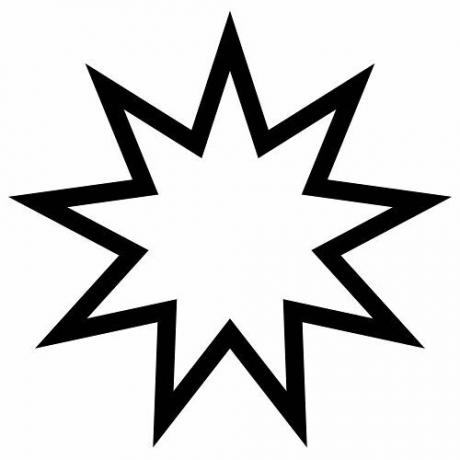O December 25th is known in Brazil and throughout the West, by tradition, as the day of Christmas, with the birth of Jesus Christ. It is one of the most important celebrations in Christianity, and it is still a very celebrated date, even for those who are not Christians, as a day to practice love for others, a moment of union and fraternity.
Christmas is well known for its typical practices, such as carrying out the Christmas dinner, which usually takes place on Christmas Eve, that is, on the night of December 24th. The 25th is also marked by celebrations that usually bring friends and family together. Another common Christmas practice is the exchange of gifts, which is related to the Santa Claus story.
Accessalso: Halloween: one of the most traditional folk festivals in the United States
Why is Christmas celebrated on December 25th?

People often wonder why we celebrate Christmas on December 25th if in the Bible there is no indication of the day Jesus Christ was born. The only indication of the birth of Christ is the location of the event: Bethlehem, in present-day Palestine. So how was this day chosen? That's what we'll see now.
We now know that until the end of the 2nd century d. C., Christians did not believe that Jesus was born on that date. Several other dates were speculated, but not December 25th. Historians believe that the choice of that day came in sometime between the third and fourth centuries.
However, why the fair choice of December 25th? There are no right answers to this question, only theories. The most accepted currently believes that this day was chosen as a strategy of the Catholic Church of weaken pagan celebrations that happened in him and thus ensure more faithful to Christianity.
The pagan celebration was the Dies Natalis Solis Invicti, a party that took place on December 25 in honor of the birth of SunInvincible or Sunundefeated. This party arose in the year 274, being created by the Emperor Aurelian, and became very popular due to the relationship between the Invincible Sun and Mithra, a god much worshiped in Rome.
Thus, as mentioned, it is believed that commemorating the birth of Christ on December 25 was a strategy of the church to win over the faithful and weaken this festival. The logic of the Church was to show that people did not celebrate the Invincible Sun on that day, but rather the birth of Jesus Christ. It is believed that the Christmas celebration was made official in 350 byPope Julius I.
Christmas symbols

Despite being a Christian party, it is very common for Christmas to be marked by some symbols that are not entirely Christian. Some of them are Santa Claus and the Christmas Tree, but other common practices, as mentioned, are gift exchange and Christmas dinner. Catholics also celebrate a Christmas Eve mass called Missa do Galo. Let's look at some of these Christmas symbols.
rooster mass
The Mass of the Rooster is a tradition within the Catholic Church that probably emerged in the 5th century, being created by the Pope Sixtus III. This Mass is held at midnight, on Christmas Eve, in St. Peter's Basilica in the Vatican. The correct origin of your name is not known, since there are several theories and none of them has historical proof of its veracity.
Accessalso: Know when and in the context of the creation of the Vatican State
Santa Claus
Santa Claus is one of the great characters of Christmas and personifies one of the most common practices of this period: a exchange of gifts. According to the legend that is taught to children, Santa Claus crosses the skies in his sleigh pulled by eight reindeer, enters the houses through the chimneys and leaves presents for the children who behaved well during the year.
Santa Claus is believed to have arising from the mix of Christian and pagan traditions and characters over time. The Christian origin of this character refers to St. Nicholas, a Catholic bishop and saint who lived in Asia Minor during the 2nd centuries d. Ç. and III d. Ç. St. Nicholas is well known for being generous, using his wealth to help the poor.
The pagan origin, in turn, goes back to Odin, character who crossed the skies mounted on sleipnir, his eight-legged horse, distributing gifts to the good people during the Yule, religious festival held by nordic during the solstice winter (around December 21st). The Christianization of Northern Europe led to the mixing of the beliefs of St. Nicholas and Odin.
This mixture gave rise to Sinterklaas, a mythical character that emerged in the region of present-day Holland and which, in turn, gave rise to Santa Claus (Santa Claus, in English), and Dutch immigrants took the belief to North America. The current characteristics of Santa Claus were consolidated by a poem 19th century, written by Clement Clarke Moore, and by advertising advertisements from the beginning of the 20th century.
Accessalso: Werewolf: the origin of this world-renowned folk character
Christmas tree

This Christmas symbol is entirely pagan and concerns the ancient practice of using the tree as a decoration or how part of religious rituals. in the times of Egyptians and of the romans, the trees were already decorated, and this action had a direct relationship with their respective religious rituals.
It is believed that the practice in question was consolidated under the influence of the Norse, who, during Yule, decorated the trees in honor of Odin (Wotan for the Germans), the most powerful god of belief Nordic. Historians believe that the practice became popular in northern Europe and continued when the region was Christianized. They also believe that the Christmas Tree itself must have arisen among the end of Middle Ages and early Modern Age.

